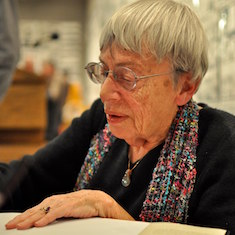Verbs and prepositions – or adverbs?
The standard definition of a preposition, as I wrote about in a previous post, is that prepositions are used to connect nouns. But prepositions also play an important role when we use them with verbs. Consider these examples:
- to break: The plate broke into pieces when it was dropped.
- to break down: The car broke down on a lonely country road.
- to break out: The pony broke out of its paddock
- to break up: They broke up during a fight at a restaurant.
![]()

Breaking down is very different from breaking up.
- to make: At this time of year, many Australians make a pilgrimage to Gallipoli in Turkey.
- to make up: J.R.R. Tolkien made up a story to amuse his children – and it became The Hobbit.
- to make out: It was hard to make out the famous Golden Gate Bridge through the fog.

Making a pilgrimage to a historic site (which is how you get there) is very different from trying to make out a landmark (which is what you do when you are there).
When different prepositions are added to the base verb, they change its meaning. When you break something, this is different from something breaking down, or from people breaking up. When you make something, this is different from making up something or making out something that is hard to see.
When we add a preposition or prepositions to a verb in this way, we call the new, changed verb a ‘phrasal verb’.
A phrasal verb can have two prepositions in it. For example, look up to and come up with.
- An author I have always looked up to is Ursula K. Le Guin.
- The students came up with many examples of phrasal verbs.

Someone I look up to: Ursula K. Le Guin.
What causes a problem for some people is the question of whether the preposition in a phrasal verb is still a preposition. After all, the part of speech that modifies a verb is an adverb – so are all these prepositions in phrasal verbs suddenly transformed into words with a split personality and into adverbs? You can find references that will tell you these words after the verb are adverbs. Pam Peters has a bet each way when she describes a phrasal verb:
[a] verb plus a closely associated adverb/preposition
This argument between grammar gurus is a bit like the medieval theologians who argued about how many angels could dance on the head of pin; it probably doesn’t really matter. I believe the easiest way to think about it is that the main function of prepositions is to join nouns, but that they can also be added to a verb to change its meaning – and that they stay as prepositions.
Phrasal verbs and verb phrases
Grammar terminology can sometimes be very confusing, and the fact that phrasal verbs and verb phrases are two very different things is a striking example.
A phrasal verb is a combination of verb and preposition that has a different meaning from the verb by itself. A ‘verb phrase’ is a verb made up of more than one word, such as an auxiliary and participle, or a catenative verb. I hope that’s clear!

If you have found this post interesting, you can find a full index to my other posts on the index page. To be notified when I post a new topic, follow me on Facebook! If you have any particular questions you’d like me to answer in future posts, just send me a message. I’m always interested to learn what people think, and how you came across this site, so please post a comment.
If you think you would be interested in either my complete grammar course or an individual customised online course (particularly suited for people who don’t live in Melbourne), just click your preferred option.